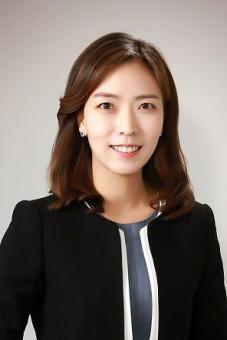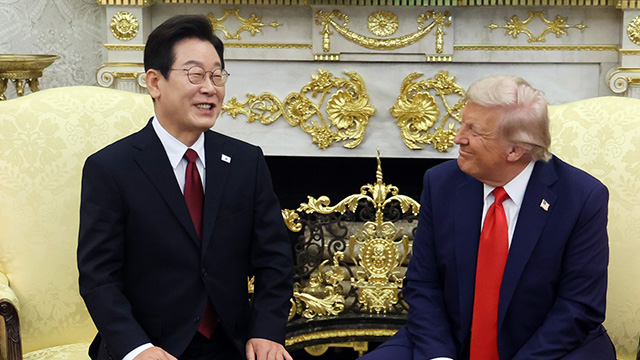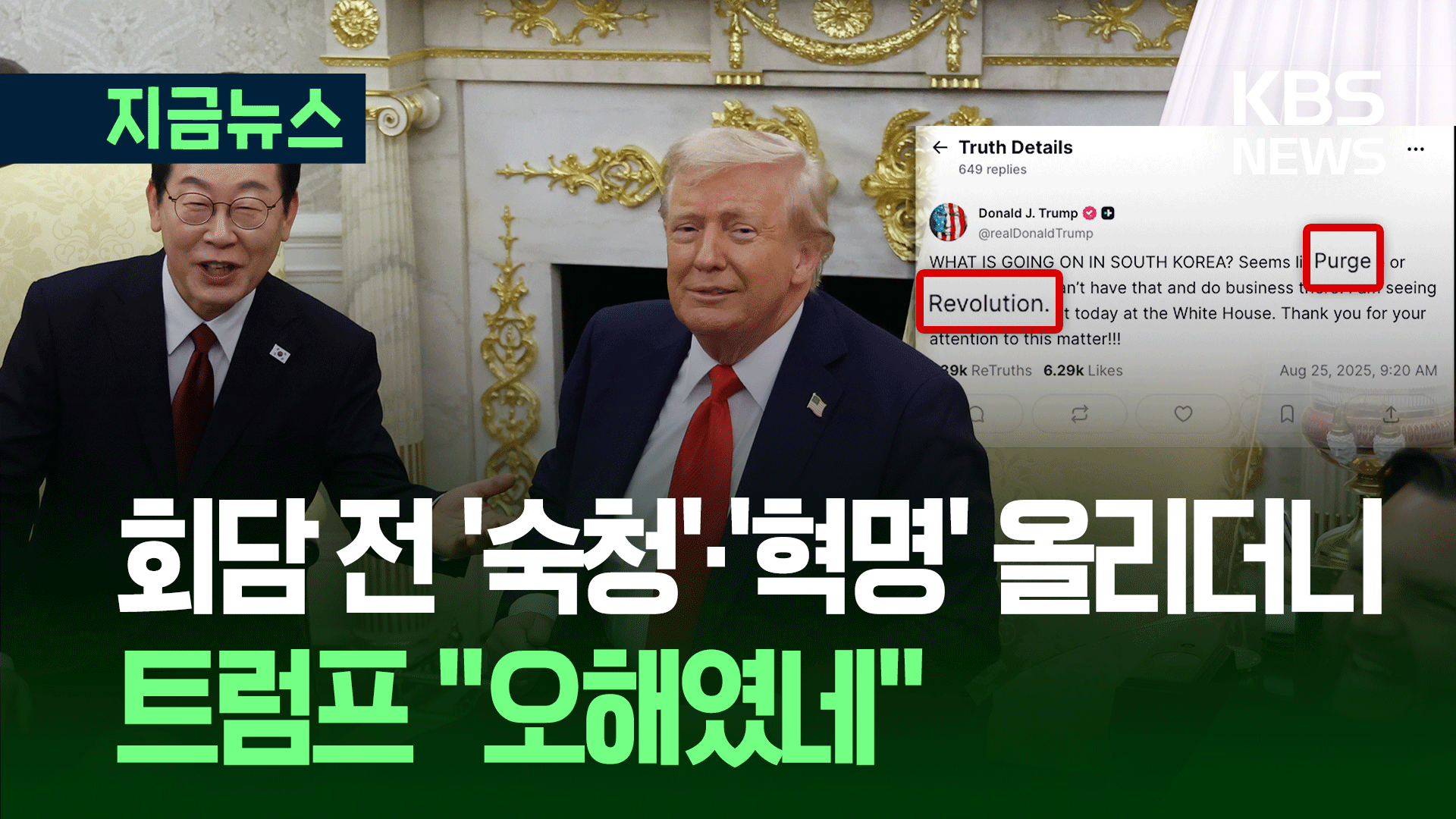[Anchor]
Possible “Trump risk” during the summit is one concern, but already, unusual situations are unfolding in terms of presidential protocol.
It is not common for our foreign minister to arrive in the U.S. first, nor for the presidential chief of staff to be on the ground as well.
Song Geum-han reports.
[Report]
One day before the Korea–U.S. summit, Presidential Chief of Staff Kang Hoon-sik arrived in Washington.
Normally, during an overseas trip of the president, the chief of staff stays behind to handle state affairs. But this time, the national security adviser and the policy chief also crossed over together, with all three senior aides mobilized in a full-out effort.
[Kang Hoon-sik/Presidential Chief of Staff: "(Isn’t this a sign that the negotiations have run into some difficulties…?) Rather than saying negotiations are facing difficulties, I think it’s more accurate to say we are making an all-out effort."]
Kang added that he would meet and persuade as many people as possible, which can also be interpreted to mean that the two sides have not been able to narrow their differences until the last minute.
Protocol for the president has also drawn attention.
There are different categories of visits — state visit, official visit, official working visit, and working visit. Unlike the previous Korea–U.S. summit, which was a state visit, this time there was no honor guard lined up. Instead, the U.S. Acting Chief of Protocol welcomed President Lee.
The presidential office explained that as this is an official working visit, the welcome ceremony was omitted.
Still, the fact that an acting chief of protocol received him is seen as somewhat unusual. In February, however, when Japanese Prime Minister Ishiba visited the U.S., the acting chief of protocol also greeted him.
There has also been speculation over why President Lee and the First Lady are staying at a hotel instead of Blair House, the U.S. president’s official guesthouse.
Blair House is said to be undergoing repairs, but last month, the Israeli prime minister, on a working visit, stayed there. Opposition parties are pointing out that this stands in stark contrast to the treatment given on that occasion.
This has been Song Geum-han, KBS News.
Possible “Trump risk” during the summit is one concern, but already, unusual situations are unfolding in terms of presidential protocol.
It is not common for our foreign minister to arrive in the U.S. first, nor for the presidential chief of staff to be on the ground as well.
Song Geum-han reports.
[Report]
One day before the Korea–U.S. summit, Presidential Chief of Staff Kang Hoon-sik arrived in Washington.
Normally, during an overseas trip of the president, the chief of staff stays behind to handle state affairs. But this time, the national security adviser and the policy chief also crossed over together, with all three senior aides mobilized in a full-out effort.
[Kang Hoon-sik/Presidential Chief of Staff: "(Isn’t this a sign that the negotiations have run into some difficulties…?) Rather than saying negotiations are facing difficulties, I think it’s more accurate to say we are making an all-out effort."]
Kang added that he would meet and persuade as many people as possible, which can also be interpreted to mean that the two sides have not been able to narrow their differences until the last minute.
Protocol for the president has also drawn attention.
There are different categories of visits — state visit, official visit, official working visit, and working visit. Unlike the previous Korea–U.S. summit, which was a state visit, this time there was no honor guard lined up. Instead, the U.S. Acting Chief of Protocol welcomed President Lee.
The presidential office explained that as this is an official working visit, the welcome ceremony was omitted.
Still, the fact that an acting chief of protocol received him is seen as somewhat unusual. In February, however, when Japanese Prime Minister Ishiba visited the U.S., the acting chief of protocol also greeted him.
There has also been speculation over why President Lee and the First Lady are staying at a hotel instead of Blair House, the U.S. president’s official guesthouse.
Blair House is said to be undergoing repairs, but last month, the Israeli prime minister, on a working visit, stayed there. Opposition parties are pointing out that this stands in stark contrast to the treatment given on that occasion.
This has been Song Geum-han, KBS News.
■ 제보하기
▷ 카카오톡 : 'KBS제보' 검색, 채널 추가
▷ 전화 : 02-781-1234, 4444
▷ 이메일 : kbs1234@kbs.co.kr
▷ 유튜브, 네이버, 카카오에서도 KBS뉴스를 구독해주세요!
- Questions over summit protocol
-
- 입력 2025-08-26 00:02:39

[Anchor]
Possible “Trump risk” during the summit is one concern, but already, unusual situations are unfolding in terms of presidential protocol.
It is not common for our foreign minister to arrive in the U.S. first, nor for the presidential chief of staff to be on the ground as well.
Song Geum-han reports.
[Report]
One day before the Korea–U.S. summit, Presidential Chief of Staff Kang Hoon-sik arrived in Washington.
Normally, during an overseas trip of the president, the chief of staff stays behind to handle state affairs. But this time, the national security adviser and the policy chief also crossed over together, with all three senior aides mobilized in a full-out effort.
[Kang Hoon-sik/Presidential Chief of Staff: "(Isn’t this a sign that the negotiations have run into some difficulties…?) Rather than saying negotiations are facing difficulties, I think it’s more accurate to say we are making an all-out effort."]
Kang added that he would meet and persuade as many people as possible, which can also be interpreted to mean that the two sides have not been able to narrow their differences until the last minute.
Protocol for the president has also drawn attention.
There are different categories of visits — state visit, official visit, official working visit, and working visit. Unlike the previous Korea–U.S. summit, which was a state visit, this time there was no honor guard lined up. Instead, the U.S. Acting Chief of Protocol welcomed President Lee.
The presidential office explained that as this is an official working visit, the welcome ceremony was omitted.
Still, the fact that an acting chief of protocol received him is seen as somewhat unusual. In February, however, when Japanese Prime Minister Ishiba visited the U.S., the acting chief of protocol also greeted him.
There has also been speculation over why President Lee and the First Lady are staying at a hotel instead of Blair House, the U.S. president’s official guesthouse.
Blair House is said to be undergoing repairs, but last month, the Israeli prime minister, on a working visit, stayed there. Opposition parties are pointing out that this stands in stark contrast to the treatment given on that occasion.
This has been Song Geum-han, KBS News.
Possible “Trump risk” during the summit is one concern, but already, unusual situations are unfolding in terms of presidential protocol.
It is not common for our foreign minister to arrive in the U.S. first, nor for the presidential chief of staff to be on the ground as well.
Song Geum-han reports.
[Report]
One day before the Korea–U.S. summit, Presidential Chief of Staff Kang Hoon-sik arrived in Washington.
Normally, during an overseas trip of the president, the chief of staff stays behind to handle state affairs. But this time, the national security adviser and the policy chief also crossed over together, with all three senior aides mobilized in a full-out effort.
[Kang Hoon-sik/Presidential Chief of Staff: "(Isn’t this a sign that the negotiations have run into some difficulties…?) Rather than saying negotiations are facing difficulties, I think it’s more accurate to say we are making an all-out effort."]
Kang added that he would meet and persuade as many people as possible, which can also be interpreted to mean that the two sides have not been able to narrow their differences until the last minute.
Protocol for the president has also drawn attention.
There are different categories of visits — state visit, official visit, official working visit, and working visit. Unlike the previous Korea–U.S. summit, which was a state visit, this time there was no honor guard lined up. Instead, the U.S. Acting Chief of Protocol welcomed President Lee.
The presidential office explained that as this is an official working visit, the welcome ceremony was omitted.
Still, the fact that an acting chief of protocol received him is seen as somewhat unusual. In February, however, when Japanese Prime Minister Ishiba visited the U.S., the acting chief of protocol also greeted him.
There has also been speculation over why President Lee and the First Lady are staying at a hotel instead of Blair House, the U.S. president’s official guesthouse.
Blair House is said to be undergoing repairs, but last month, the Israeli prime minister, on a working visit, stayed there. Opposition parties are pointing out that this stands in stark contrast to the treatment given on that occasion.
This has been Song Geum-han, KBS News.
-
-

송금한 기자 email@kbs.co.kr
송금한 기자의 기사 모음
-
이 기사가 좋으셨다면
-
좋아요
0
-
응원해요
0
-
후속 원해요
0










![[속보] 이 대통령 “국방비 증액할 것…북한 도발 <br>대응하며 북미대화”](/data/layer/904/2025/08/20250826_P5ExEh.jpg)

![[속보] 대통령실 “한미정상회담서 농축산물 추가 개방 거론 안 돼”](/data/layer/904/2025/08/20250826_RHLdzj.jpg)


이 기사에 대한 의견을 남겨주세요.